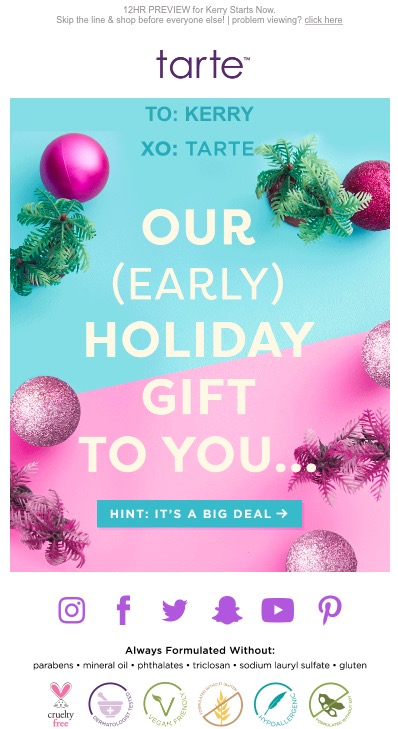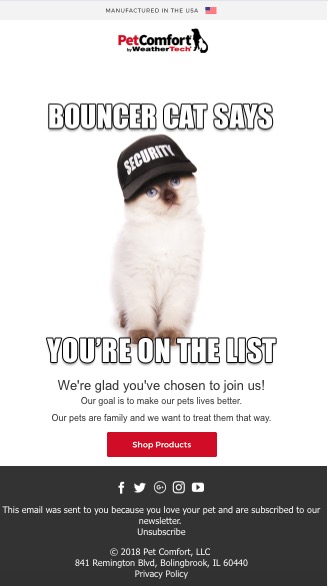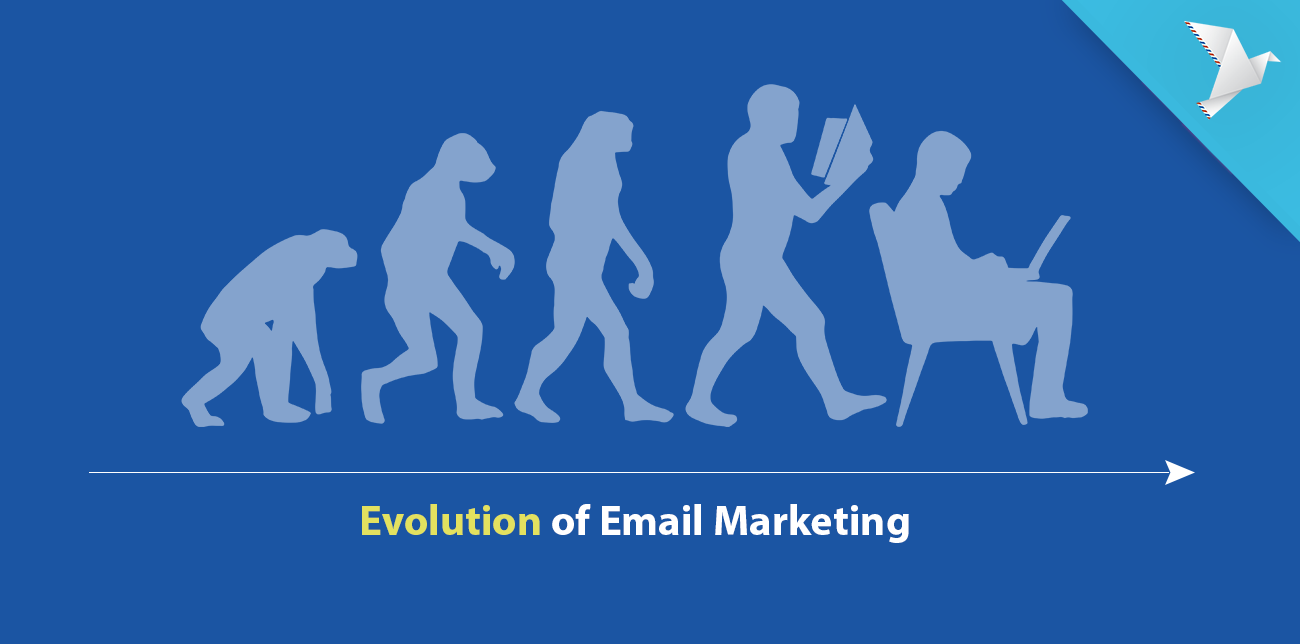Email marketing has made some notable strides over the past few years to become a major channel for eCommerce. However, the eCommerce email marketing landscape wasn’t always such a seamless, automated process. Once upon a time, companies marketed their brands and products to potential customers by delivering postcards by snail mail, or delivering entire printed catalogs to physical mailboxes.
This impersonal method of marketing was destined to morph into email marketing as technology advanced and more and more people adopted email as their main channel of communication with friends, family, and their favorite brands. Drip marketing arises as a strategic remedy, especially in light of research revealing that an astonishing 70% of consumers exhibit a tendency to increase their expenditures with brands that tailor their services.

In this post, we’ll look at how the evolution of Ecommerce email marketing has impacted this retail vertical, some common challenges faced by email marketers today and how you can overcome those challenges to stay current with the trend. Ready to reap mind-blowing results for your business? Read on…
A changing landscape: Email marketing as a major channel for eCommerce retailers.
The 1990’s brought us technology that changed the world and how we communicate. It all began in 1991 when the Internet was “born”. Soon after, the free email service, Hotmail, launched in 1996, and email took off as the main channel of business and personal communication across the globe. The days of consumers being targeted at their physical mailboxes with snail mail marketing campaigns were gone. Now it all came down to clicking and opening your inbox. Marketers soon realized that they could benefit from the popularity boom of email by promoting their marketing campaigns via email. All of a sudden, there was a way to track campaign efforts and success! The expensive guessing game was over. And thus, was the birth of email marketing, which would soon become the preferred channel of direct marketing, as we know it today.
The 1990’s Not only is email marketing one of the most cost-efficient forms of direct marketing, eCommerce marketers can utilize marketing automation to develop more personalized and relevant messages to communicate their brand and engage shoppers in real-time, therefore, boosting conversion rates. From triggered emails tailored to shoppers’ viewing history to cart abandonment, email marketing has created a unique platform for marketers in eCommerce to track and react to consumer behavior like never before.

It is estimated that businesses can earn $44 for every $1 spent on email marketing according to a study by Campaign Monitor. There are many personalized tweaks marketers can employ to further boost ROI. For example, did you know that by simply adding personalized subject lines to your emails they are 26% more likely to be opened? Also, by implementing a segmented email marketing campaign you can skyrocket your business to achieving as much as a 760% increase of revenue. Checkmate!
Still not sold on how the email marketing trend can help your online business? Consider that even with the social media takeover on the internet of the past few years, email marketing campaigns still outperform Twitter and Facebook by generating 174% more conversions. Now, that’s a reason to do a happy dance.
Hacking the numerous challenges faced by email marketers today
A successful email marketing campaign centers around more than creating your campaign and hitting send. ECommerce marketers must also know how to fully utilize email marketing, which means having the know-how on how to solve the numerous challenges that can ultimately pose as obstacles to achieving goals. Here are some of the top challenges facing email marketers today and some tips on how to overcome them:
Achieving email deliverability…and why it’s important!
Email deliverability is a crucial part of an email campaign. There are over 2.9 billion email accounts worldwide, while over 90% of American consumers use their email on a daily basis, and as we mentioned above, the average purchase rate via email is three times higher than on social media. So yes, email deliverability is really important!
Keeping this in mind, let’s talk about the first challenge, the dreaded…spam. No, not the canned meat, the other dreaded spam — you know, the folder where all of your hard work and money goes down the drain. After all, the point is to get potential customers to click, open, and be engaged with your brand, and if, for example, your email ends up in a spam folder, this won’t happen.
How to overcome this challenge: The solution to not ending up on a blacklist of spammers is quite simple, really: don’t buy email lists. Sending unsolicited messages to recipients who may or may not be interested leads to bleak ROI forecasts, and also results in recipients reporting your emails as spam and earns you a shady reputation which could lead to regulatory inquiries regarding spam and privacy laws. Also, eCommerce marketers can easily adhere to data privacy laws by adopting GDPR compliant processes or ones that comply with your local regulations.
Another core component and challenge to improving email deliverability is ensuring the quality of your existing contact lists. Once a customer has opted-in to your newsletters, how can you be sure that your email campaign goes into their inbox, not their spam? Or worst still, what if the email address you have on your list is no longer valid? Don’t panic, we’ve got your solution below.
How to overcome this challenge: Practice some basic email list hygiene. Be sure to regularly delete contacts from your email list who have never once clicked to open your emails or engage on your website. Furthermore, offer a clear way in which email recipients can update their information such letting you know that they are now using a new email address as their primary channel of communication (or even if they want to unsubscribe — remember what we said above about ending up on spam lists?). Also, an added tip is to be sure to give customers on your email list the option to set their preferences for frequency and topics of interest for email communication. This way you can be sure you are not annoying your subscribers by delivering irrelevant information to their inbox and are instead delivering regularly scheduled emails that have dynamic content.
Here you can find a guide if you got blacklisted.
Gaining and retaining subscribers to your email list
Now that we have gone over how to lower your undeliverable email rate, let’s look at how the evolution of eCommerce email marketing has impacted growing your subscriber lists. Since consumers as well as email clients are selective in filtering out unwanted emails, eCommerce managers need to gain and retain subscribers for email campaigns by creating an automated shopping journey that is catered specifically to each customer and their specific needs.

How to overcome this challenge: By using good inbound marketing practices you can build the reputation of your brand and earn the loyalty of subscribers. Don’t forget that content is key. Quality has replaced quantity as a strategic approach as email marketing has evolved. Send emails that differentiates your brand, keep it value driven for the readers, such as offering meaningful product update options that address your business’ key buyer personas in your opt-in. By letting the customer tell you if they want to be informed about your brand through recommendations, guides, etc, it’s easy to target them with relevant personal messages.
The next component in the equation for overcoming the challenge of growing and retaining your email list is using the segmentation best practices 2018. Utilizing a dynamic segmentation tool to compile all of your marketing databases to identify different segments, you can split up your contacts by grouping them together by similarities such as demographics, expressed interests, lead source, activity, purchases and more. This way, you can create the ideal marketing message for each consumer segment and turn contacts on your list into sales.
It might sound overwhelming, but it’s not. All you need is to use a cutting edge email marketing automation platform and you can easily consolidate your customer data and send smart, targeted emails. The ultimate goal: to send the right message to potential customers at the right time and convert them. Once you get through the teething stage, all that’s left to do is test, optimize, and repeat the process to grow your email list!

ContactPigeon’s segmentation for eCommerce email marketing.
Ecommerce email marketing, the new era
Traditional email marketing as we know it is dying and in order to stay relevant, the next generation of eCommerce email marketing will need to adapt to new forms. It’s all about the evolution of customer data driving personalization, dynamic content, AI and automation. Here are some predicted future trends of email marketing to keep an eye on:
Predictive and eCommerce email marketing automation.
As technological development in email marketing and automation continues to soar and take us to new heights, the future of email marketing will drive better informed, data-driven decisions that contribute to increased ROI through the combination of predictive marketing and automation. These timely triggers driven by data and insights such as customer behaviors will help to even further fine-tune marketing automation.
Personalization of content.
The one-on-one level of engagement vs mass mailing is important today, but will be imperative tomorrow as our inboxes become more visual, (even 3D!), giving us the ability to organize our inbox with gestures and discard or reorganize emails according to our own distinct personal priorities.
Also, a result of the increased presence of automated tools and machine learning will mean improved personalization and better segmentation. Expect a future filled with more dynamic and responsive email designs based on previous emails results; meaning marketers can expect an even greater ROI from their email marketing campaigns in the years to come.
High integration with other channels.
The typical one-size-fits-all marketing funnel is on its way out, thanks to the evolution of eCommerce email marketing. This means that the journey and customer experience of the future will consist of emails as a leading marketing channel highly integrated with other channels, such as online chat, bots, push notifications, apps, on-site messages, social channels or even offline interactions. Emails will interact with leads entering at all stages of the funnel. The result: a consistent omnichannel deliverability, personalized and seamless journey in touch points from one channel to another.
The evolution of eCommerce email marketing continues
Don’t underestimate the momentum of the email marketing evolution. The future is now. Creating well-integrated emails as part of overall channel strategy in delivering a consistent look, feel, and personalized automated triggered messages across all interactions with consumers are what every eCommerce marketer needs to do today, not tomorrow. ContactPigeon’s cutting-edge platform is the future of email marketing. Are you ready for the future?
[full_width][cta id=’2774′][/full_width]





